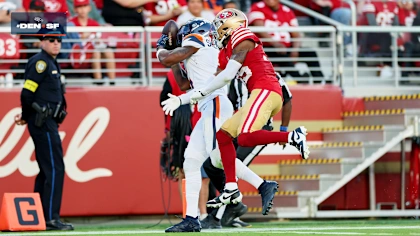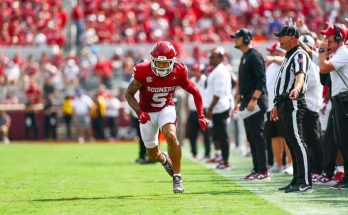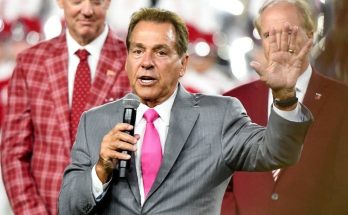The Denver Broncos have released their initial unofficial depth chart ahead of their preseason opener against the San Francisco 49ers, offering fans and analysts their first glimpse into how the team might shape up for the 2025 season. While depth charts at this stage are always subject to change—especially before any live game action—they provide valuable insight into how the coaching staff views the roster, which players are standing out in training camp, and which position battles remain undecided.
### **Quarterback Position: Stability or Competition?**
At the top of the depth chart, the quarterback situation will always draw the most attention. As of now, the Broncos have [insert current QB1] listed as the starter, with [insert QB2] and [insert QB3] following behind. Given the importance of this position, any movement here will be closely monitored throughout the preseason. If the starter is a veteran, the coaching staff may limit his reps in exhibition games to avoid unnecessary risk. However, if there’s an open competition—such as a young draft pick pushing a seasoned player—these preseason snaps could be crucial in determining who earns the Week 1 nod.
The battle for QB2 is also worth watching, as injuries can quickly thrust a backup into the spotlight. If the Broncos have a promising rookie or a recently signed veteran in the mix, their performance against the 49ers’ defense could set the tone for the rest of the preseason.
### **Running Backs: A Deep and Versatile Group**
The running back room appears stacked, with [insert RB1] leading the way, followed by [insert RB2] and [insert RB3]. The Broncos have historically valued a committee approach, utilizing different backs for specific roles—power running, pass-catching, and short-yardage situations. This depth chart will likely shift as coaches evaluate who excels in blitz pickup, route running, and explosiveness in live game action.
A player to watch might be a late-round draft pick or an undrafted free agent who has impressed in camp. If they can outperform expectations in preseason games, they could push for a roster spot or even climb into the primary rotation.
### **Wide Receivers: Who Steps Up Beyond the Top Options?**
At wide receiver, the Broncos’ depth chart lists [insert WR1], [insert WR2], and [insert WR3] as the top three, but the real intrigue lies further down. With injuries and roster cuts looming, players fighting for the fourth, fifth, or sixth spots must make an impact early. Speedsters, red-zone threats, and special teams contributors will all have a chance to state their case against San Francisco’s secondary.
A key storyline will be whether any young receivers can separate themselves from the pack. Rookies and second-year players often use preseason games to prove they belong, and a standout performance could force the coaching staff to reconsider their initial pecking order.
### **Tight Ends: Blocking vs. Receiving Roles**
The tight end position often defines an offense’s flexibility, and the Broncos’ depth chart suggests a mix of blocking specialists and pass-catchers. [Insert TE1] is likely the primary receiving threat, while [insert TE2] may be the inline blocker. However, modern NFL offenses frequently use multiple tight end sets, so the battle for the third spot could be pivotal.
If a younger tight end demonstrates reliable hands and improved blocking in preseason, they could carve out a larger role than initially projected.
### **Offensive Line: Protecting the Franchise**
The offensive line depth chart will be under heavy scrutiny, as protecting the quarterback and establishing the run are foundational to success. The starting five appears set with [insert names], but the second-string group will be critical for depth. Injuries along the O-line can derail a season, so the Broncos will be evaluating which backups can step in seamlessly if called upon.
Preseason games are especially important for offensive linemen, as practice reps don’t always replicate live-game intensity. A strong showing against the 49ers’ defensive front could solidify a backup’s place on the roster.
### **Defensive Front: Pass Rush and Run Stoppers**
On the defensive side, the Broncos’ depth chart along the defensive line and edge rushers will be fascinating to track. [Insert key players] are expected to lead the charge, but rotational pass rushers and interior run-stuffers will need to prove their worth.
The 49ers’ offensive line will be a good early test for Denver’s defensive front. If a young defensive end or tackle can generate pressure or hold his ground against the run, he could earn more snaps as the season progresses.
### **Linebackers: Speed and Coverage Ability**
At linebacker, the Broncos’ depth chart suggests a mix of veterans and younger players competing for roles. The starting group likely features [insert names], but preseason performances could shake up the rotation.
Coverage ability is increasingly vital for modern linebackers, so those who can defend running backs and tight ends in space will have an edge. A standout performance in pass coverage or as a blitzer could elevate a backup into a more prominent role.
### **Secondary: Depth at Cornerback and Safety**
The defensive backfield is another area where competition will be fierce. The starting cornerbacks and safeties are presumably set with [insert names], but nickel packages and dime formations require reliable depth.
Young corners will have ample opportunity to prove themselves against San Francisco’s receivers, while safeties must show they can tackle in the open field and prevent big plays. A strong preseason from a rookie or unheralded player could lead to increased defensive snaps.
### **Special Teams: The Unsung Battle**
While often overlooked, the special teams depth chart is crucial for roster decisions. Kickers, punters, and return specialists must perform under pressure, as a single missed kick or fumbled return could sway final cuts.
If the Broncos have an undrafted rookie pushing for the returner job, their performance in live action will carry significant weight. Likewise, a backup linebacker or receiver who excels on coverage units could secure a roster spot based on special teams value alone.
### **Final Thoughts: What to Watch Against the 49ers**
This initial depth chart is merely a snapshot, and the real evaluations begin once the Broncos take the field against the 49ers. Coaches will be looking for players who elevate their game under the lights, as practice standouts don’t always translate to game-day production.
Key things to monitor include:
– **Quarterback decision-making** – Who looks most comfortable leading the offense?
– **Pass protection** – Can the O-line hold up against an aggressive defensive front?
– **Defensive playmakers** – Which backups flash potential to contribute in the regular season?
– **Special teams execution** – Are there any hidden gems in the kicking or return game?
By the final whistle of the preseason opener, the depth chart could already look different. Injuries, surprises, and breakout performances will shape the Broncos’ roster as they prepare for the regular season. For now, this unofficial depth chart serves as a starting point—but the real competition is just beginning



